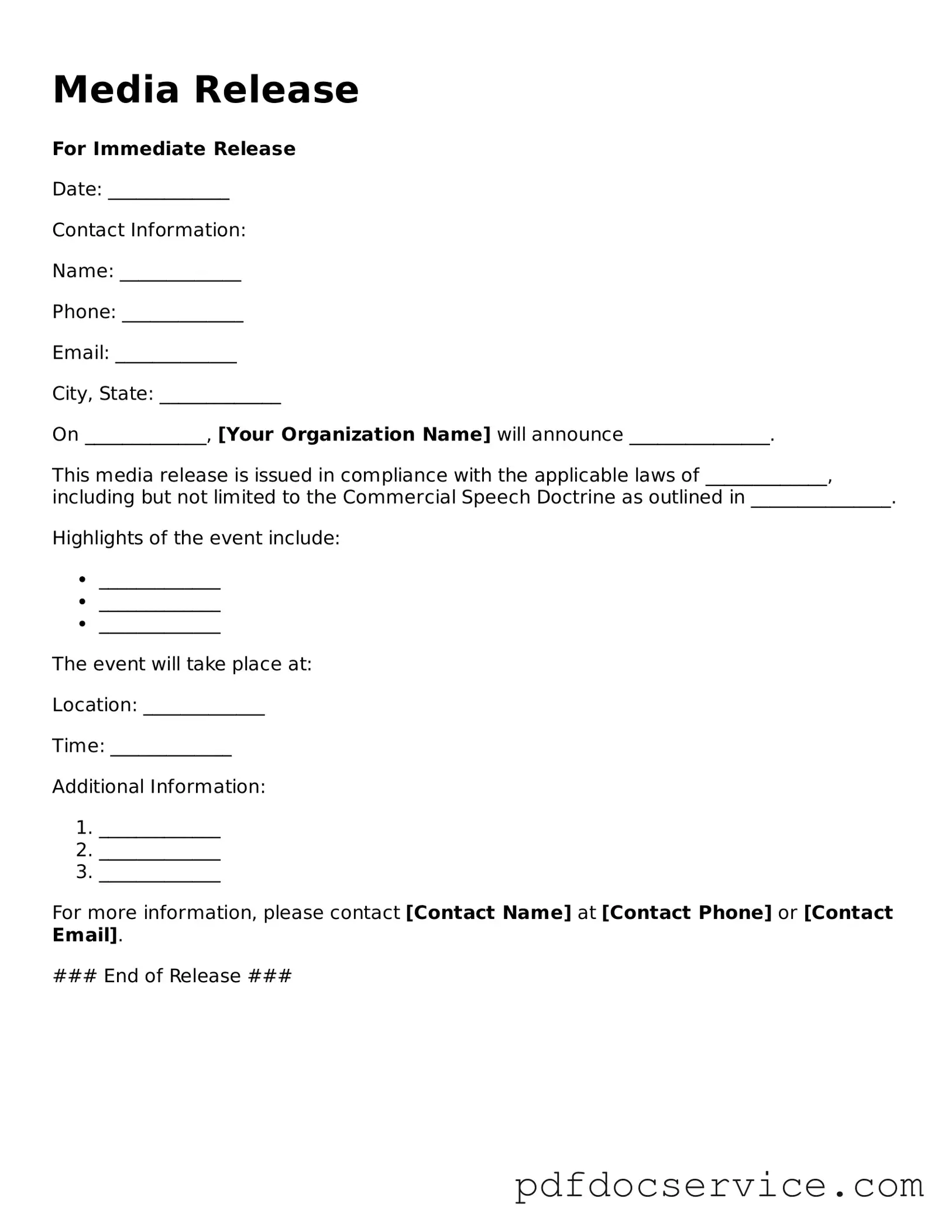A Media Release form is a legal document that grants permission for an individual or organization to use a person's image, likeness, or voice in media such as photographs, videos, or audio recordings. This form is commonly used in various contexts, including events, marketing, and promotional activities.
Signing a Media Release form protects both parties involved. For the individual, it ensures that their rights are respected and that they understand how their image or voice will be used. For the organization, it provides legal clearance to use the media without the risk of future claims or disputes.
Typically, the person whose image or voice will be used must sign the form. If the individual is a minor, a parent or legal guardian should sign on their behalf. This ensures that consent is obtained from someone who has the legal authority to make decisions for the minor.
A Media Release form generally includes the following information:
-
The name and contact information of the individual granting permission.
-
A description of the media being created.
-
The intended use of the media.
-
The duration of the permission granted.
-
Any compensation or consideration being offered, if applicable.
Generally, once a Media Release form is signed, the consent is considered final. However, some forms may include a clause that allows for revocation under certain conditions. It is important to read the document carefully and understand your rights before signing.
If you choose not to sign the Media Release form, the organization may be unable to use your image or voice in their media. This could limit your participation in the event or project, as many organizations require this permission to proceed.
Compensation varies depending on the project and the agreement between the parties. Some Media Release forms may specify a fee or other form of compensation, while others may not offer any financial reward. Always clarify this before signing.
The validity of a Media Release form depends on the terms outlined within the document. Some forms may be valid for a specific project or duration, while others may grant perpetual rights to use the media. Review the form to understand its specific terms.
Media Release forms can be obtained from various sources, including legal websites, event organizers, or through legal professionals. Many organizations also provide their own customized forms that meet their specific needs.
